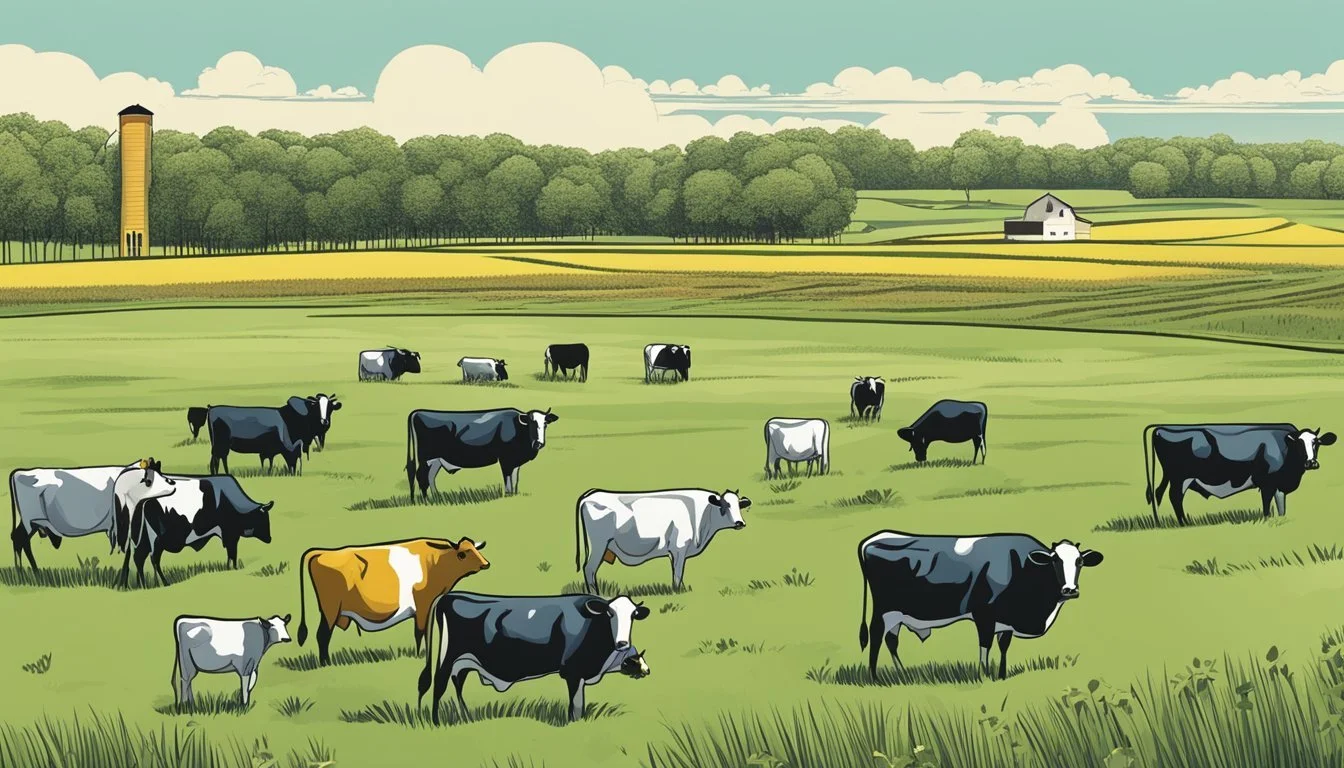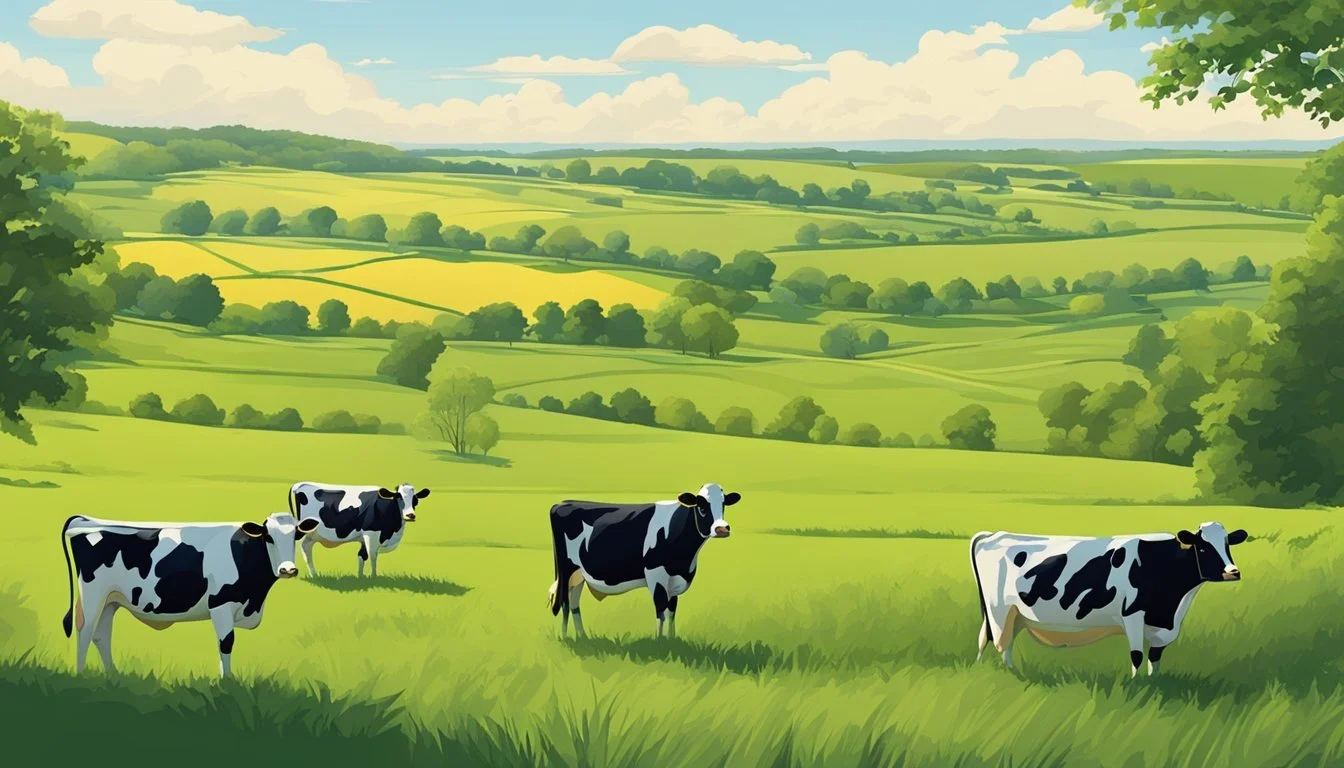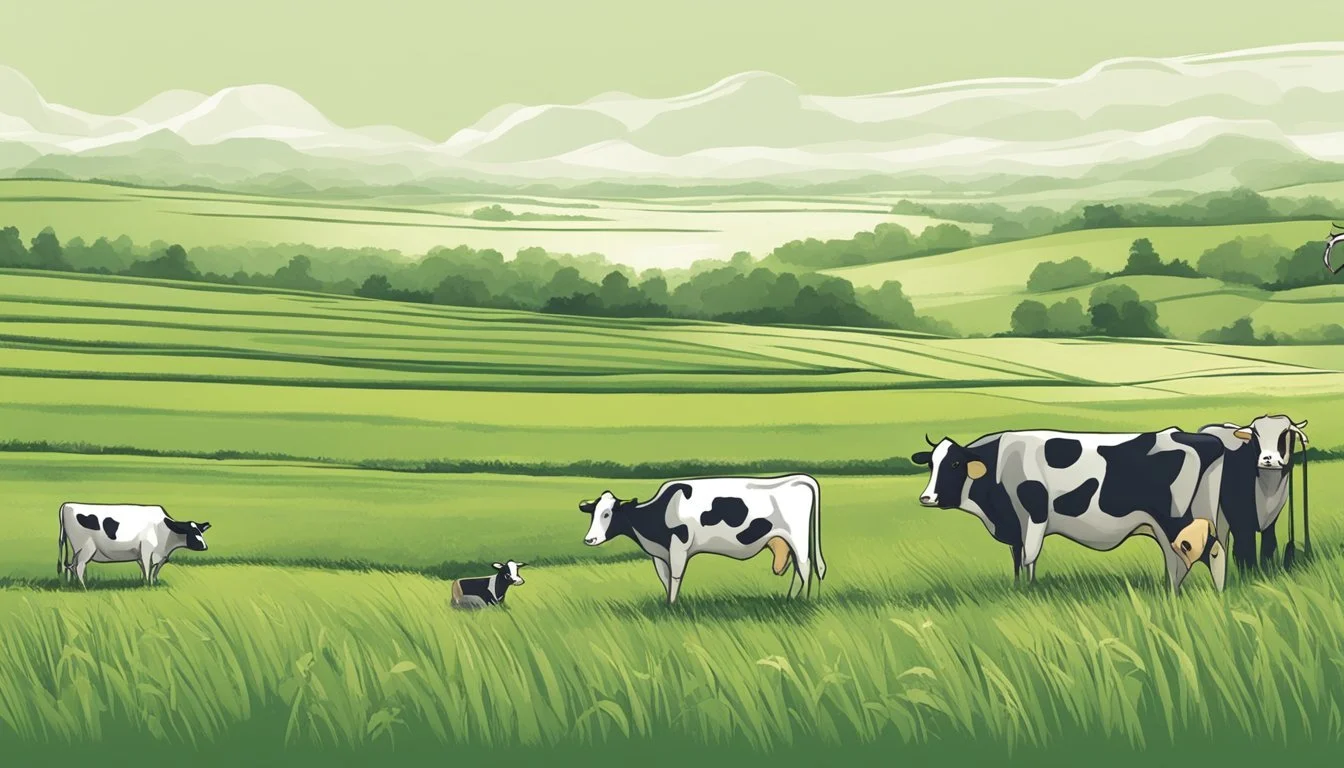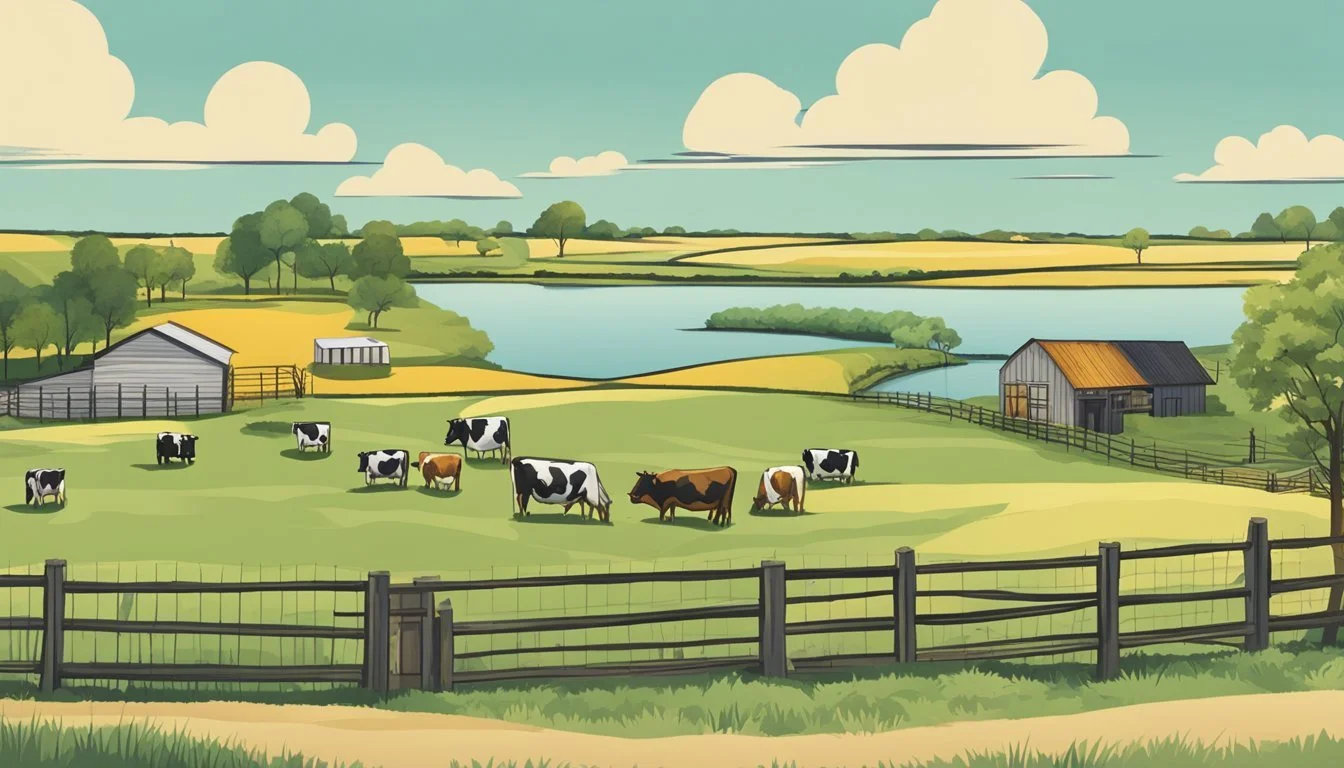Stocking Rate Illinois
Determining Optimal Cow Density Per Acre
Determining the appropriate stocking rate for cattle in Illinois requires careful consideration of several factors, including pasture productivity, forage availability, and the farm's management goals. The stocking rate is a measure of the number of animals a piece of land can support year-round without degrading resources or the environment. In Illinois, the stocking rate can vary widely due to differences in soil fertility, rainfall, and forage type.
Farmers in Illinois need to assess their land's specific conditions to establish a sustainable stocking rate for their cattle operations. This includes understanding the average weight of their cattle, the quality and quantity of forage the land can produce, and the length of the grazing season. Illinois tends to have diverse climate patterns, with varying rainfall and temperatures across the state, influencing pasture growth rates and thus impacting stocking rates.
Understanding Stocking Rate
Stocking rate is a critical factor in managing grazing lands and ensuring the health of both the livestock and pasture. Optimal stocking rates vary by region, land type, and forage availability.
Defining Stocking Rate and Animal Units
Stocking rate is the number of livestock units that can be sustainably supported by a given area of land over a specific period. This measurement is commonly expressed as animal units (AU) per acre. An animal unit is a standard way to reference the grazing impact of one 1,000-pound cow with or without a calf up to weaning age, or their equivalent, over the course of a month (AU month or AUM), or a year (AU year or AUY).
In Illinois, one standard cow, weighing approximately 1,000 pounds, is considered one animal unit.
Importance of Stocking Rate
Determining the correct stocking rate is essential for maintaining pasture productivity and preventing overgrazing. It ensures that the livestock have enough forage throughout the grazing period and that the land can recover adequately. An appropriate stocking rate is influenced by factors such as:
Total forage production
Variability of production through the seasons
Livestock weight and consumption needs
For example, in the Sierra Foothills, 15-18 acres of unirrigated annual rangeland can support one average cow for a year. However, this figure can decrease to one acre per cow for a 6-month grazing season on irrigated pasture. This demonstrates that stocking rates can vary dramatically based on forage production and land management practices.
Fundamentals of Grazing Management
When it comes to properly supporting your livestock, understanding the core aspects of grazing management is essential. A well-managed grazing system can benefit both the land and the cattle.
Principles of Rotational Grazing
Rotational grazing involves dividing pasture land into smaller areas and then moving livestock between these areas to allow forage plants to rest and regrow. Illinois properties often utilize this method to maintain optimal forage quality and availability. The key principles are to control the frequency and duration of grazing, allowing for sufficient recovery time of the pastures. Properly implemented, rotational grazing can reduce the risk of overgrazing, improve plant growth, and ultimately support more cattle per acre.
Overgrazing and Its Impacts
Overgrazing occurs when plants are not given enough time to recover between grazing events, leading to soil compaction, reduced forage quality, and long-term damage to the pasture. This can result in a decline in pasture productivity and increased soil erosion. The impacts are particularly concerning in Illinois where changing weather patterns can exacerbate the situation, making recovery even more challenging.
Grazing Management Practices
Effective grazing management practices are based on adjusting stocking rates to align with forage availability. This is a dynamic process, as it involves constant monitoring of forage conditions, soil health, and nutritional needs of the cattle. Incorporating strategies such as:
Regular pasture assessments to guide when to rotate livestock.
Stocking rate adjustments tailored to seasonal changes and forage supply.
Use of a grazing calendar to plan and record grazing moves.
These practices play a pivotal role in sustaining a productive pasture and supporting a healthy herd. Good grazing management stands at the core of optimizing livestock production and maintaining the health of Illinois pastures.
Determining Stocking Capacity
Determining the appropriate stocking capacity for a property in Illinois requires accurate assessment of forage demand, quality and production of forage, and land and soil conditions. These factors ensure livestock is supported without degrading the resources.
Calculating Forage Demand
The first step is calculating the forage demand. This calculation is dependent on the type and number of livestock. For example, a mature 1,200-lb cow typically requires about 26 pounds of forage per day. The forage demand for an entire herd is the sum of individual animal needs over the time they will be grazing.
Forage Demand Example:
Cow weight: 1,200 lb
Daily forage requirement: 26 lb per cow
Herd size: 50 cows
Grazing period: 6 months
Calculation: 26 lb/cow/day * 50 cows * 30 days/month * 6 months = 234,000 lb of forage needed
Assessing Forage Quality and Production
Forage quality directly affects its nutritional value, which can influence the stocking rate. Highly nutritious forage supports a higher stocking rate. Assessing the property’s forage production involves examining past growth rates and yields. Proper soil management and fertility are key to maintaining high forage yields. Establish a baseline using historical data and adjust for weather patterns and changes in management practices.
Indicators of forage quality: Protein content, digestibility, and energy levels.
Forage production factors: Soil fertility, climate conditions, and forage species.
Land and Soil Assessment
A comprehensive land and soil assessment considers soil type, topography, and water availability, which impact forage growth and sustainability of the land under grazing pressures. The soil quality, including pH level, nutrient content, and organic matter, is crucial for healthy forage production.
Factors in Soil Assessment:
Soil type: Determines water drainage and retention capabilities.
Topography: Influences water runoff and erosion risks.
Water resources: Availability for irrigation and livestock consumption.
By integrating these assessments, landowners in Illinois can establish a viable stocking rate that aligns with their property’s capacity, ensuring a sustainable grazing practice.
Calculating Stocking Rates
Effective management of pasture lands is critical to sustainable livestock farming. Maximizing the carrying capacity without overburdening the land involves intricate calculations of stocking rates, where cow size and local conditions play pivotal roles.
Stocking Rates and Livestock Size
Stocking rate is the number of livestock units that can be sustainably supported on a given area of land. In Illinois, this calculation is essential for maintaining pasture health and ensuring sufficient forage. The rate is often expressed in Animal Units (AU), with one AU being equivalent to a 1000-pound cow. An adjustment is necessary for cattle of different body weights; for example, a 1400-pound cow would represent 1.4 AU.
Using Stocking Rate Calculators
Tools such as the SDSU Extension Grazing Calculator can simplify the process of determining appropriate stocking rates for a property. Users input variables such as the area of the pasture, average weight of the cows, and the available forage in pounds per acre. The calculator processes these inputs to provide an estimated number of Animal Days/Acre (ADA), which indicates how many animals the land can support each day.
Adjustments for Local Conditions
Location-specific factors like climate and weather conditions significantly influence stocking rates. Illinois' diverse climate can mean variation in forage production; hence local environmental conditions must be incorporated into any stocking rate calculation. Cattle producers might adjust the stocking rates based on annual rainfall, the length of the grazing season, and the health of the pasture to avoid overgrazing and to promote regrowth.
Maximizing Pasture Utilization
Maximizing pasture utilization involves strategic planning and management of resources. It is essential to balance the forage production with the livestock demand to ensure sustainable grazing systems.
Optimizing Paddock Design
The layout of paddocks significantly affects the efficiency of pasture use. Paddock shape should ideally be rectangular to facilitate uniform grazing patterns. Multiple paddocks (also known as a paddock system) allow for more precise control of grazing, where livestock can be rotated to allow pastures rest periods, enhancing pasture forage yield. Straight fence lines and easily accessible water sources further optimize the design for both livestock movement and pasture recovery.
Managing Forage Types and Availability
Choosing the right forage type is crucial for a successful grazing system. Illinois pastures benefit from a mix of cool-season grasses and legumes which can provide adequate forage across seasons. It's essential to balance forage availability with livestock requirements, ensuring a constant supply. Monitoring pounds per acre of available forage helps in making informed decisions about supplemental feeding and adjusting stocking rates as necessary to prevent overgrazing.
Grazing Pressure and Utilization Rate
Grazing pressure must be managed to maintain plant health and productivity. Utilization rate is the percentage of forage consumed out of what's available. A sustainable utilization rate generally falls between 25-35%, allowing pastures to recover while providing enough feed. This needs to be adjusted based on the pasturre forage yield, which varies with weather conditions, soil fertility, and forage type. Utilization rates above 40% can lead to overgrazing, damaging the pasture’s long-term viability.
Sustainable Grazing Systems
Creating a sustainable grazing system in Illinois involves meticulous management of forage resources while considering the environmental impacts. This balance ensures the health of pastures, addresses carrying capacity, and supports sustainable farming practices throughout the grazing season.
Balancing Animal Needs and Forage Resources
In any given pasture, the stocking rate—how many cows can be supported per acre—is a crucial determinant of both animal welfare and forage availability. For robust pasture health, it's imperative that the number of animals does not exceed the carrying capacity of the land. This dynamic balance depends on:
Forage yield: Regular monitoring can prevent overgrazing.
Animal weight: Typically, lighter animals require less forage than heavier ones.
Balanced stocking rates also allow for pasture recovery time, which can promote the sustainability of the forage resource and prevent soil erosion.
Environmental Considerations in Grazing
Sustainable grazing extends beyond simply ensuring that animals have enough to eat. It includes considering the following environmental factors:
Soil health: Overgrazing can lead to poor soil quality and increased runoff.
Water resources: Grazing patterns must protect waterways from contamination.
Biodiversity: Managing grazing allows for varied plant species to coexist, which in turn supports a wide range of wildlife habitats.
Implementing grazing rotations and allocating rest periods for pastures are examples of how farmers can minimize their environmental footprint.
Sustainability Practices in Grazing
Sustainable farming practices are essential to maintaining soil health, water quality, and overall ecosystem integrity. In Illinois, sustainability practices might include:
Rotational grazing: Moving livestock between pastures to allow vegetation recovery.
Supplemental feeding: Reducing pressure on pastures during lean months.
Pasture renovation: Improving pasture stands with appropriate seed mixes and fertilization strategies aligned with environmental stewardship.
These approaches help ensure that grazing systems are productive for current and future farming needs while preserving the environment.
Enhancing Forage and Livestock Production
Making informed decisions on stocking rates in Illinois involves a combination of supplementary feeding, optimization of forage yield, and maintaining livestock health for peak performance. Employing the right strategies in these areas ensures sustainable forage consumption and supports the desired livestock production levels.
Supplemental Feeding and Nutrition
Proper supplemental feeding is crucial to bridge any nutritional gaps that may not be met by existing forage, particularly during the winter months or drought conditions. Dairy cattle and other livestock might require additional nutrients to maintain productivity, which can be achieved by incorporating a strategic blend of protein, energy, minerals, and vitamins. Supplements should be selected based on a pasture inventory and analysis of the nutritional content available in the forage consumed.
Forage Consumption: Adjust supplements according to seasonal changes in forage quality.
Nutritional Balance: Ensure a balanced diet to promote healthy livestock and optimize milk production in dairy cattle.
Forage Yield Optimization Techniques
To enhance forage yield, producers can apply several techniques focusing on soil health, seeding practices, and proper grazing management. Average forage production can vary, so tailored measures to local conditions are necessary.
Soil Testing: Regular analysis to tailor fertilization and correct deficiencies.
Seeding Variety: Utilize a variety of plant species suited to Illinois' climate for extended grazing periods and recovery times.
Grazing Rotation: Implement rotational grazing to prevent overgrazing and allow for plant recovery, optimizing forage availability.
Livestock Health and Performance
The health and performance of livestock correlate directly with the quality and quantity of forage available. Illnesses can be mitigated by ensuring a clean water supply, proper forage, and regular health check-ups.
Preventive Care: Vaccinations and routine deworming to prevent common livestock diseases.
Monitoring: Regular weight and health monitoring to adjust feeding as necessary to maintain optimal condition.
Stress Reduction: Minimize crowding and maintain a calm environment to promote growth and reduce the risk of illness.
Monitoring and Adjusting Stocking Rate
Effective pasture management in Illinois requires a dynamic approach to monitoring and adjusting the stocking rate. These practices are essential in ensuring sustainable grazing without overburdening the pastureland.
Pasture Inventory and Clipping
One must conduct a Pasture Inventory periodically to assess the available forage mass and its suitability for grazing. Clipping is a direct method of measuring forage yield by cutting a known area's grass to ground level and then weighing it. This provides a tangible metric to adjust the stocking rate accordingly.
Tools for Measuring Pasture Growth
For a more precise calculation of forage availability, tools like a Grazing Stick are indispensable. The NRCS provides this simple device to help estimate the available dry matter per acre. It measures grass height and correlates it to pounds of forage per acre, helping ranchers decide whether to increase or decrease livestock numbers.
Response to Annual Variations
Stocking rate decisions must factor in Annual Precipitation due to its significant impact on forage yield. In years of lower rainfall, ranchers might need to decrease their stocking rate to prevent overgrazing. Conversely, in seasons with abundant rain, it may be possible to support a higher stocking rate. Continuous monitoring allows for adjustments in real-time, aligning with the principles of adaptive pasture management.
Legal and Operational Considerations
When assessing the stocking rate in Illinois, property owners must navigate both legal requirements and operational strategies to ensure the sustainability and success of their livestock operations.
Compliance with Local Regulations
In Illinois, ranch and farm owners are required to comply with state and local regulations, which may dictate the maximum number of cows per acre to prevent overgrazing and environmental degradation. Legal compliance involves adhering to zoning laws, animal welfare standards, and environmental regulations, such as:
Zoning requirements: These indicate if and where cattle farming is permissible.
Livestock welfare laws: Ensure that animals are kept in humane conditions.
Environmental protection rules: Designed to protect soil health and water quality from overstocking.
Operational Efficiency and Farm Planning
Operational efficiency on a farm or ranch in Illinois is directly related to proper planning, which positively influences productivity. Farm owners must consider how their stocking rate affects the farm's overall efficiency. Key operational points include:
Forage Production: Understanding the yield of edible pasture per acre to feed the cattle.
Pasture Management: Implementing rotational grazing to maximize forage use and allow for regrowth.
Carrying Capacity Evaluation: Regularly evaluating the land's capacity to sustain the number of cows without degradation.
To determine the optimal stocking rate and maintain operational efficiency, farm owners can utilize the following formula:
Total Land Area (acres) ÷ [(Number of Animal Units (AU)) x (Grazing Season in months)]
For example, if a farm has 200 acres of pasture and the grazing season lasts 12 months, the stocking rate for cows weighing 1,000 lbs each (1 AU) could be estimated. However, they must adjust for local forage availability and quality, which can vary by region.






